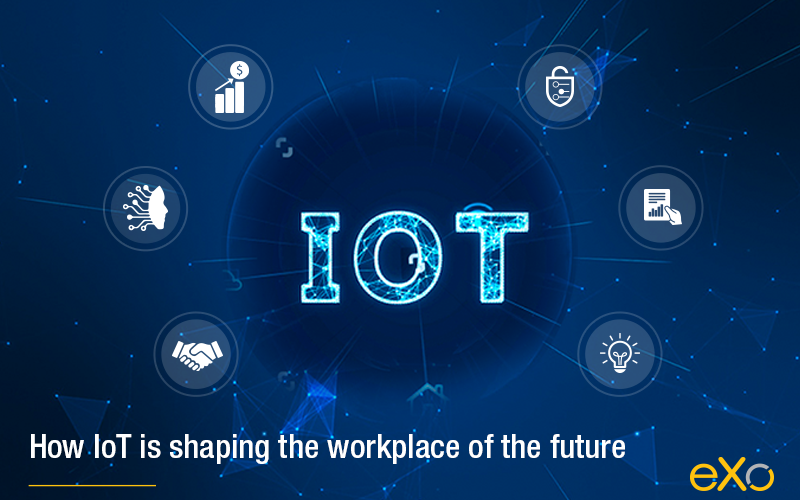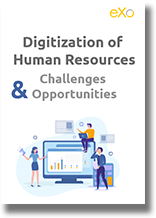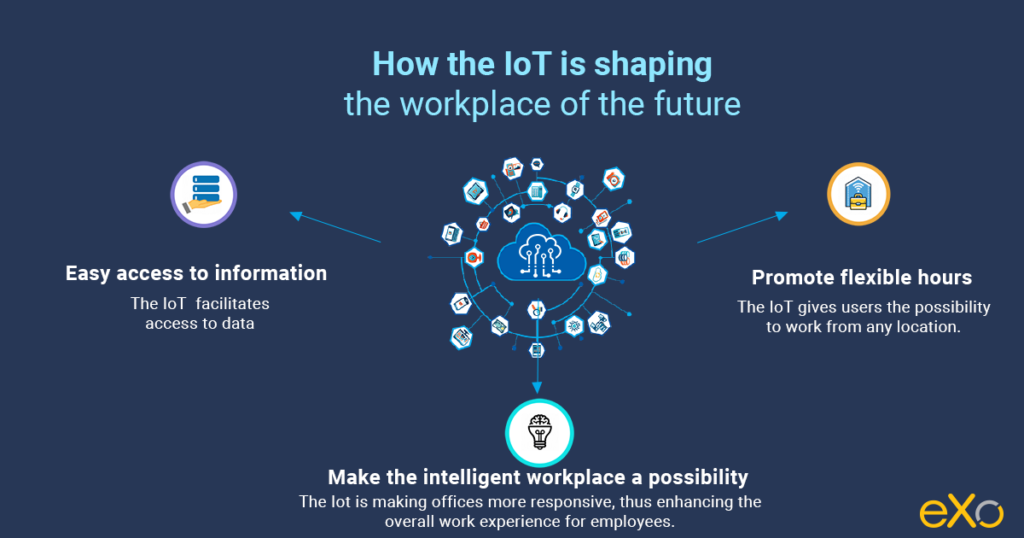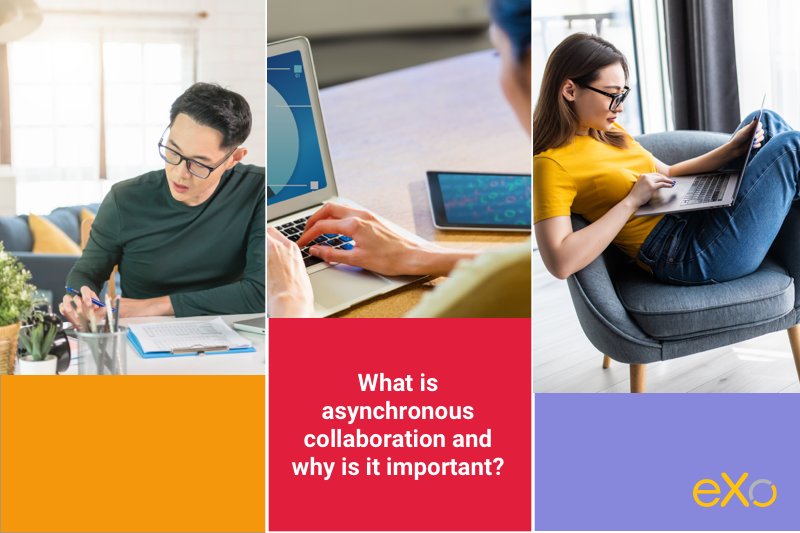- Brahim Jaouane
- November 14, 2019
How the IoT is shaping the workplace of the future
Can you imagine living in a world with no internet connection?
Can you let go of your smartphone for even a few hours?
And can you run a successful business without making use of the latest technologies?
The answer is a resonant “No” in most cases. This is due to the great advancements made in technology over the years. From the Internet and smartphones to big data and artificial intelligence, technology has progressively become an integral part of the way we live and work.

Content
In the modern world we live in today, technology has moved from being a luxury to a necessity. The Internet is widely accessible, smartphones are affordable and businesses are under increasing pressure to adopt new technologies to attract and retain talent and to remain competitive.
New technological innovations are not expected to halt any time soon. Tech giants like Google and Amazon are heavily investing in high tech, designed for both the general public and businesses. Among the most hyped technologies of recent years is the internet of things.
In this blog post, we will define the internet of things (IoT), explore some practical examples of the IoT and highlight its impact on the workplace.
1. What is the Internet of Things?
In its simplest form, the internet of things is a collection of interconnected devices capable of gathering and transferring data about their usage and surroundings. The IoT has evolved over the years to encompass multiple other technologies, like artificial intelligence, machine learning, sensors and embedded systems.
A typical IoT ecosystem contains a variety of smart devices connected to the internet or a centralized IoT platform. These devices are equipped with embedded processors and sensors that allow them to gather and transmit valuable insights. The data collected can be stored internally or in the cloud to be analyzed with advanced analytics techniques. The results can later be shared with other hardware or applications to address a specific need.
The IoT is progressively making its way into consumers’ homes around the world as well as into different industries, like healthcare, automotive and many others. Some prime examples of smart devices we use in our everyday life include smart home ecosystems, like Google Home and Amazon’s Alexa. These devices allow users to access and control multiple smart products, like TVs, thermostats, lightbulbs and security devices.
The business world is increasingly adopting the IoT to streamline processes and improve efficiency. Both the intranet of things and the industrial internet of things (IIoT) are terminologies associated with the adoption of IoT within businesses. In short, both models rely on the use of smart machines and data analytics to extract valuable information that can be used to enhance manufacturing and industrial processes. The main difference between the internet of things (IoT) and the industrial internet of things (IIoT) is their usage and target audiences. The IoT targets the general public with solutions, like home appliances and smart cars, while the IIoT is used for industrial and manufacturing purposes, like supply chain management and automation.
You may also like:

FREE WHITE PAPER
Digitization of
Human Resources
Digitization of Human Resources is a hot topic these days. What do companies expect out of it?
2. How the IoT is reshaping the workplace
The IoT has been gathering a lot of momentum over the last couple of years with tech companies and businesses investing heavily in the technology. According to one international data corporation, global IoT spending is on course to reach US$ 745 billion. The same report expects IoT spending to keep on increasing in the upcoming years to reach over US$ 1 trillion.
" Global spending on the IoT is on pace to reach $745 billion this year, a rise of more than 15% over 2018 "
The International Data Corporation
The global IoT market is also growing at a rapid pace. That is according to a Fortune Business Insights report that valued the IoT global market at around US$ 190 bn in 2018. This figure is expected to grow significantly to reach US$ 1.102 bn by 2026.
Countless benefits are associated with the introduction of the IoT within businesses. Obviously, improving industrial and manufacturing processes and reducing operational costs represent the main reasons businesses are adopting the IoT. IoT combined with cloud MRP software can do wonders to the manufacturing process. However, below we explore the benefits the IoT can bring to employees and office life.
Easy access to information
It goes without saying that locating and accessing information is among the most recurring challenges facing employees, particularly due to the multitude of applications and tools used daily to perform specific operations and to track certain behaviours. Office digital assistants, like Amazon’s Alexa for Business, can be used both on the organizational and personal (employee) levels to facilitate access to data. Such solutions are able to integrate with a variety of tools and platforms, like CRM platforms, collaboration solutions and more.
Promote flexible hours and remote working
The main concept of the IoT is built on flexibility and efficiency by allowing users to control smart devices remotely. Flexibility and efficiency are also the main traits of remote working. The IoT gives users the possibility to work from any location by connecting certain devices to their smartphones or laptops. For example, an employee can organize a meeting from home by remotely controlling devices like lighting, projectors, printers, etc.
Make the intelligent workplace a possibility
Intelligent workplaces are becoming a possibility with the IoT. The likes of Amazon, Google and Cisco are betting on the IoT and artificial intelligence to make offices more responsive, thus enhancing the overall work experience for employees. Building management systems, repurposed smart home appliances and business-specific IoT devices represent the backbone of a modern workplace.
Building management systems, iot management, government fleet management software, repurposed smart home appliances and business-specific IoT devices represent the backbone of a modern workplace.
A modern intelligent office might consist of an air conditioning system that responds to changing temperatures, vending machines that can automatically be filled and advanced security systems that can be controlled through specific apps. Repurposed smart home devices could be used to control web-enabled devices, like light bulbs, coffee machines and microwaves. Finally, IoT devices specific for business use would allow users to control devices designed for business use, like projectors, large screens and video conferencing tools.

Having all of these high tech gadgets in the workplace would help significantly revolutionize the work experience. It would also guarantee higher engagement and retention rates as employees would have more control over their surroundings, all while reducing the time spent on repetitive daily tasks.
The internet of things represents one of the most promising technologies of our era. Its capacity to encompass a variety of other hyped trends, like AI and machine learning, and to integrate with the devices we use daily will make it an essential part of our future.
Despite its growing popularity and use (both by the public and businesses), the IoT still has its detractors, with questions still asked about its security aspects and, most importantly, the privacy of users, as many believe that living and interacting with highly intelligent devices may help tech companies to gather all kinds of information about users without their consent.
The jury is still out on the IoT, despite its promising potential, but one thing is certain: the technology is here to stay thanks to the backing of tech giants and the public.
eXo Platform provides top-notch IoT software development services to help businesses leverage the benefits of the Internet of Things and stay ahead in their industry.
A Digital Workplace tailored to your needs
Discover How To Boost your employee
engagement and performance
engagement and performance
Rate this post
I am a Digital Marketing specialist specialized in SEO at eXo Platform.
Passionate about new technologies and Digital Marketing.
With 10 years' experience, I support companies in their digital communication strategies and implement the tools necessary for their success.
My approach combines the use of different traffic acquisition levers and an optimization of the user experience to convert visitors into customers.
After various digital experiences in communication agencies as well as in B2B company, I have a wide range of skills and I am able to manage the digital marketing strategy of small and medium-sized companies.
Related posts
- All
- eXo
- Digital workplace
- Open source
- Internal communication
- Collaboration
- News
- intranet
- Future of work
- workplace
- Knowledge management
- Employee engagement
- Employee experience
- Employee productivity
- onboarding
- Employee recognition
- Change management
- Cartoon
- Digital transformation
- Infographic
- Remote work
- Sneak Peek
- Solutions
- Thought leadership
- Tips & Tricks
- Tutorial
- Uncategorized
Leave a Reply
( Your e-mail address will not be published)
Connexion
0 Comments
Commentaires en ligne
Afficher tous les commentaires


